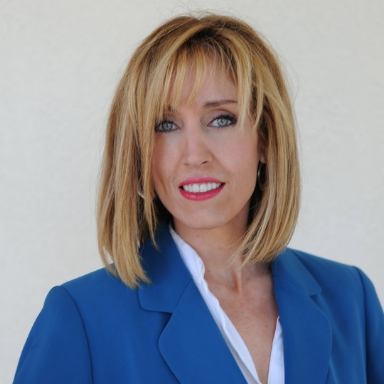Free, One-Day Shipping How Retailers Can Keep Up With Customer Expectations
By Monica Eaton-Cardone, Chargebacks911

As a retailer—regardless of your product category or sales model—you will always be stacked up against the biggest names in the marketplace. Amazon, for example, has the infrastructure and resources to constantly up their game and provide a more convenient, enjoyable experience for buyers.
Years and years ago, Amazon first introduced shoppers to one-click purchasing. Their Alexa devices are now making voice-enabled commerce a promising development. And those are just a few examples of how they’ve changed the game for online retail.
What about other merchants, though? How does a player like Amazon affect the market more broadly?
Pushing Limitations of Service & Fulfillment
Let’s use shipping to illustrate this idea. Free two-day shipping for Prime members has been a standard offering for years. Now, though, the company is in the process of further shortening the time frame by introducing free one-day Prime shipping. Given that there’s more than 100 million Prime subscribers in the U.S. alone…that change is going to impact consumer expectations.
Thanks to the expectations fostered by mega-retailers, consumers expect goods to arrive fast and for as little as possible. According to the National Retail Federation, around 40 percent of consumers expect items to arrive within two days after making a purchase, and they also expect free shipping. Another 29 percent of buyers have gone so far as to abandon a purchase once they realized that the merchant didn’t offer two-day shipping.
Of course, it’s not easy to keep up with that level of customer expectation. In fact, providing the kind of fast, low-cost shipping that contemporary eCommerce customers now expect is extremely challenging. Not only that, but you also need to keep up with trends and new threats in cybersecurity and fraud. It’s a very delicate balancing act that can easily spiral into a nightmare for order fulfillment. Unfortunately, there’s no convenient way around this matter.
It can be tempting to relax your standards for verification and order security to speed up processes and make it easier. Cutting corners on security best practices is a huge mistake, though.
With lax security, you will see increased fraud instances. This will increase costs and gum-up the works in other facets of the business. Plus, it ultimately catches up with you in terms of customer satisfaction, as customers are put at-risk due to your security vulnerabilities.
The Fraud—Fulfillment Balancing Act
As a merchant, you constantly find yourself trying to strike a balance between reasonable fraud mitigation strategies and streamlining the customer experience.
On the one hand, every security measure represents a degree of friction in the transaction life cycle. Too much friction, and you may end up slowing down the transaction process, or even motivating potential customers to abandon their transactions. Too little security verification, though, and fraud could quickly spiral out of control.
This is a legitimate concern. After all, online sellers currently lose about 7 out of 10 potential sales due to shopping cart abandonment. That fact incentivizes many sellers to try and eliminate transaction friction wherever they can.
Cutting friction may not only help you streamline the transaction process; it could also reduce your chargeback rate. Specifically, faster fulfillment can prevent some cases of friendly fraud. What we refer to as “friendly fraud” describes a situation in which when a buyer completes a purchase, then later files a chargeback without the justification to do so. It’s a fast-growing problem, and it costs retailers $2.94 in revenue for every $1 in transaction value.
One of the explanations most commonly associated with friendly fraud chargebacks is that the buyer never received the merchandise ordered. Thus, by streamlining fulfillment, you may prevent some of these disputes.
So, where do you draw the line between minimizing harmful, abandonment-inducing friction and fraud prevention best practices? The key lies in learning to distinguish between what we call “positive” and “negative” friction.
Identify Helpful Friction Points
Not all friction in the checkout process is bad. In fact, some friction in the checkout and fulfillment processes can be a helpful, important roadblock against fraud. The difference lies in distinguishing between helpful friction points that deter bad actors, and harmful ones that deter legitimate buyers.
Positive friction points create a barrier against fraud and abuse, but still allow legitimate customers to pass through without any significant slowdown or direct interaction. Backend fraud mitigation technologies like geolocation, address verification service (AVS), and IP verification are all examples of positive friction. They’re useful tools to identify and stop criminal fraud, but as they’re all backend technologies, they create no significant friction in the customer experience.
Here are some other examples of positive friction:
- Optioaln Account Creation: Customer accounts allow you to verify users and track history more effectively. However, you shouldn’t force customers to create an account before purchasing.
- Complex Passwords: When creating an account, require users to devise a complex passcode, including letters, numbers, and symbols.
- Offer 3-D Secure: 3-D Secure 2.0 technology works like a PIN code for card-not-present purchases. It’s an opt-in service, so it will only impact customers who want to use it.
- Verify Orders: Always direct customers to a verification screen before completing a purchase. You can’t guarantee the user will be diligent, but at least you offer the chance to identify any mistakes.
- CVV Verification: Most legitimate users will either have easy access to their payment card or will have memorized the card’s CVV code.
All the above practices create little-to-no slowdown in the process for customers but can seriously trip-up a fraudster. They are positive friction because they mitigate your fraud and chargeback risk, without impacting buyers.
In contrast, negative friction constitutes all the points in the process at which you put unnecessary barriers between yourself and your buyers. This may include broken site navigation, forced account registration, or limited payment methods at checkout, among many others. The point of distinction should be based on two questions:
- Does this friction point serve a legitimate purpose?
- Does the benefit outweigh the significance of the added burden?
Something like CVV verification is an added step for buyers. However, the security it offers drastically outweighs the added challenge of entering a three-digit code.
The good news is that negative friction points are often easy to resolve. For instance, rather than forcing buyers to fill-out excessive and redundant fields on the checkout page, most merchants now simply ask buyers if their billing and shipping addresses are the same.
Offset Unavoidable Friction In Fulfillment
Even when you must include a bit of friction, you can offset it by reducing friction elsewhere. For example, it’s possible to auto-populate fields during checkout; you can automatically fill the city and state field based on ZIP code, or the card brand field using the bank identification number associated with the brand.
We can apply this idea to order fulfillment as well. You can provide more complex, time-consuming or expensive services by optimizing and offsetting costs in other areas.
Tools like tracking and delivery confirmation both reassure buyers that their orders are on the way, and they also can serve as evidence if the transaction devolves into a dispute. Fast and free shipping can be made feasible by incorporating some costs into the cost of goods, boosting conversion, and using shipping as a point for advertising purposes.
It’s a struggle to stay ahead of customer expectations while also balancing best practices against increased friction. It’s more than possible, though, with the right strategies in place.
 About The Author
About The Author
Risk management and fraud prevention expert Monica Eaton-Cardone is cofounder and COO of Chargebacks911 (www.chargebacks911.com), a global chargeback mitigation company.
